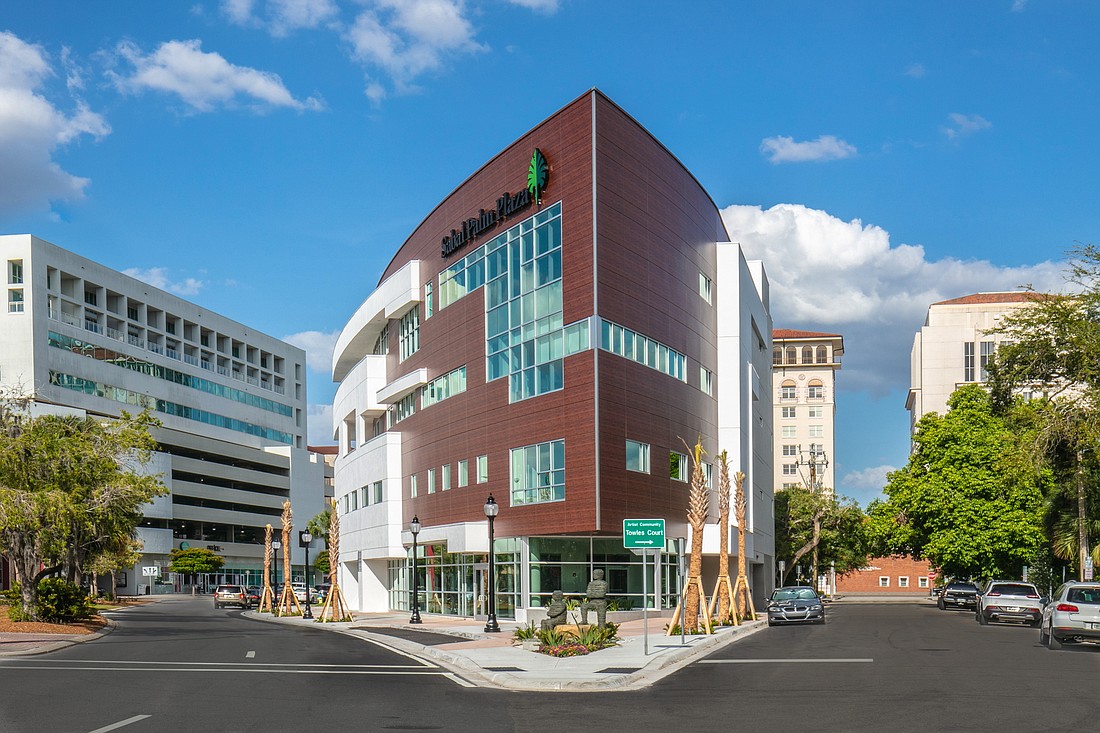- July 26, 2024
-
-
Loading

Loading

A February Federal Reserve survey of senior loan officers nationwide suggests that because more U.S. banks have adopted stricter underwriting of commercial loans, a slowdown in commercial lending could be coming in 2019.
Executives of community banks along the Gulf Coast from Tampa to Fort Myers, though, are nonplussed by the report, suggesting the Fed’s data bears more relevance to major banks and significant loans than it does smaller banks that operate in spaces eschewed by their larger counterparts.
Continued population growth in the central and southern Gulf Coast region, several bankers say, will feed demand for more expansion in service industries and employment centers in 2019. Some banks, in turn, are investing in offices and people to capture a larger share of the market.
“In context as it relates to us, that survey is of senior loan officers from the largest domestic banks, whereas being a smaller community bank in this region, the commercial real estate and commercial and industrial markets, as well as small business in this area, are pretty robust,” says Greg Blurton, who recently joined Fort Myers-based Edison National Bank as vice president of commercial lending and business development.
In 2018, Edison posted a 15% gain in commercial and land development lending and an increase of 20.2% in commercial and industrial loans, according to data from the Federal Deposit Insurance Corp. The bank, on the flip side, reported a 4.8% reduction in multifamily real estate loans. Some of the smaller community banks, says Blurton, write few loans for multifamily because most credit needs in that space are too large.
Blurton’s sentiments are echoed up the coast to Sarasota and Tampa, where Sabal Palm Bank and Bank of Tampa executives say they see few signs of market retraction, with only Bank of Tampa showing a decline in 2018 in one of the key lending categories. The bank had a 10.3% drop in commercial and industrial lending last year but gained 34.9% in its commercial and land development loan portfolio and 116.5% in multifamily residential loans.
Bank of Tampa Chief Banking Officer Corey Neil attributes the drop in C&I loan value to a number of payoffs, adding the market remains strong. So bullish in that space is Bank of Tampa that it added two branches last year to serve the Sarasota and Pinellas county markets with an emphasis of capturing more C&I loan business.
“We are lending. We haven't tightened. We have the same standards and requirements we did leading up to, during and after the recession. There hasn't been a loosening up of the requirements, and we all have the same standards.” Greg Blurton, Edison National Bank
“That continues to be a critical area as our bank all along has been focused explicitly on the C&I space, which I believe I believe remains a good market for us,” says Neil. “We are actively seeking to grow that service area and the investments we have made in the physical plant and in people is driven toward owner-managed businesses, professional service firms and other good, core private businesses.”
Sarasota-based Sabal Palm Bank, which also operates a branch office in Venice, saw significant gains in all three lending categories in 2018. President and CEO Neil McCurry says most of the region continues to benefit from population growth, and that means good business for local banks that operate in space left vacant by major lenders and industry consolidation.
Last year, Sabal Palm posted a 17.7% gain in construction and land development lending year-over-year from December 2017 to December 2018, along with a 65.7% increase in commercial and industrial loans. Multifamily was particularly robust at Sabal Palm, with a year-over-year gain of 135.6%, according to FDIC data.
“We continue to experience a net population growth that is beneficial, we continue to have low unemployment and tourism was strong in 2018 despite the red tide, and overall investment in the market has been good, so there is a lot of opportunity out there for banks to be aggressive,” says McCurry. “Demand in the market continues to be steady. I don’t see a lot of speculative activities, but I do see consistent, steady growth that can be absorbed in the Sarasota market and in all of Southwest Florida.”
McCurry partially credits Sabal Palm’s loan growth with a third location it opened in downtown Sarasota in spring 2017. “With that we added some staff in the lending area and greater exposure being downtown,” McCurry says. “That has raised our visibility.”
Corey Neil says Bank of Tampa is experiencing a similar return on its growth investment in Pinellas and Sarasota counties.
“While we now have an office in Sarasota, we had three bankers on the street working to develop business before the office opened,” says Neil. “We've been building for growth, so it’s nice to see growth happening.”